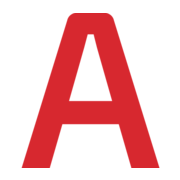 tw0122
7 months ago
tw0122
7 months ago
Item?8.01.
Other Events.
On June 4, 2024, Annexon announced positive topline results from a randomized placebo-controlled pivotal Phase 3 clinical trial in patients with GBS. The Phase 3 trial met its primary endpoint, with a single infusion of ANX005 30 mg/kg achieving a statistically significant 2.4-fold improvement on the GBS-disability scale (“GBS-DS”) (proportional odds analysis, week 8, p = 0.0058). ANX005 30 mg/kg treatment also demonstrated improvements versus placebo on key secondary endpoints, including early gains in muscle strength (day 8, p < 0.0001* and week 8, p = 0.0351*) and a median of 28 fewer days on artificial ventilation (through week 26, p = 0.0356*). Additionally, ANX005 30 mg/kg demonstrated an early reduction in the prespecified analysis of serum levels of neurofilament light chain, a biomarker of nerve damage (11.2% reduction relative to placebo between weeks 2–4, p = 0.03*) and a 31-day reduction in the median time to walk independently (week 26, p = 0.0211*), each of which are important clinical care outcomes. (* nominal)
The randomized, placebo-controlled Phase 3 trial, which enrolled 241 subjects in Bangladesh and the Philippines, evaluated two doses of ANX005, 30 mg/kg and 75 mg/kg, which both delivered rapid and complete suppression of complement activity but differed in duration of C1q inhibition. The 30 mg/kg dose lasted one week and the 75 mg/kg dose lasted two to three weeks. ANX005 75 mg/kg outperformed placebo on multiple endpoints, however, it was not statistically significant on the primary endpoint of GBS-DS at week 8 (p = 0.5548). The two dose levels were evaluated based on findings in the earlier Phase 1b proof-of-concept study, which showed efficacy in pooled analysis of both shorter and longer duration of ANX005 C1q inhibition. Because classical complement drives tissue damage in the early phase of disease, while facilitating nerve repair after acute nerve injury, the strong positive Phase 3 results with the 30 mg/kg dose resulting in one week of C1q inhibition appeared to define the optimal treatment window.
The clinical safety and tolerability findings of ANX005 at both doses in the Phase 3 study support a generally well-tolerated profile with no new safety signals. The majority of adverse events were mild Grade 1 to moderate Grade 2 events. The most common treatment-related adverse events were infusion related reactions (30.4%) that were mostly mild transient rashes. There were no autoimmune related adverse events and no drug-related deaths or serious infections observed.
The GBS Phase 3 study was conducted in Bangladesh and Philippines due to the high prevalence of GBS and limited access to standard of care intravenous immunoglobulin. Based on feedback from the U.S. Food and Drug Administration (“FDA”), Annexon has initiated a real-world evidence (“RWE”) protocol with International Guillain-Barré Syndrome Outcomes Study to establish comparability between Phase 3 participants and Western patients. RWE data and a potential biologics license application submission with the FDA are expected in the first half of 2025. Annexon plans to present the Phase 3 data at the 2024 Peripheral Nerve Society Annual Meeting on June 25, 2024.
GBS is a rapid and acute neurological disease with a narrow therapeutic window that results in the hospitalization of over 22,000 people annually in the U.S. and Europe. The significant and long-term disease burden associated with GBS on patients, caregivers, hospitals and payers has led to a multi-billion-dollar annual economic cost to the U.S. healthcare system. Currently, there are no approved treatments for GBS by the FDA.
Item?9.01.
Financial Statements and Exhibits.


 tw0122
7 months ago
tw0122
7 months ago
